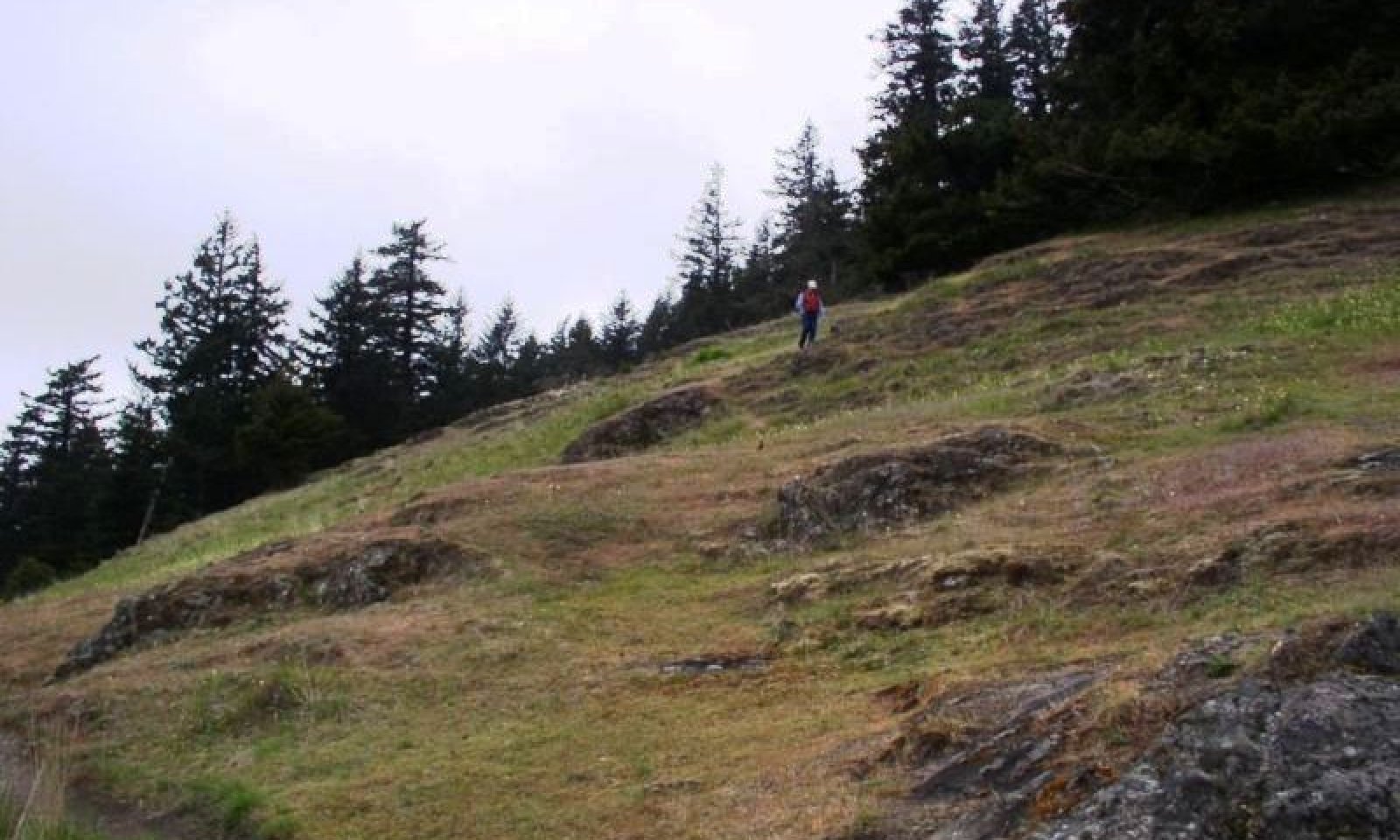

Natural Resources
Conservation Service
Ecological site R002XN202WA
Prairie Bald
Last updated: 12/09/2024
Accessed: 12/19/2025
General information
Provisional. A provisional ecological site description has undergone quality control and quality assurance review. It contains a working state and transition model and enough information to identify the ecological site.
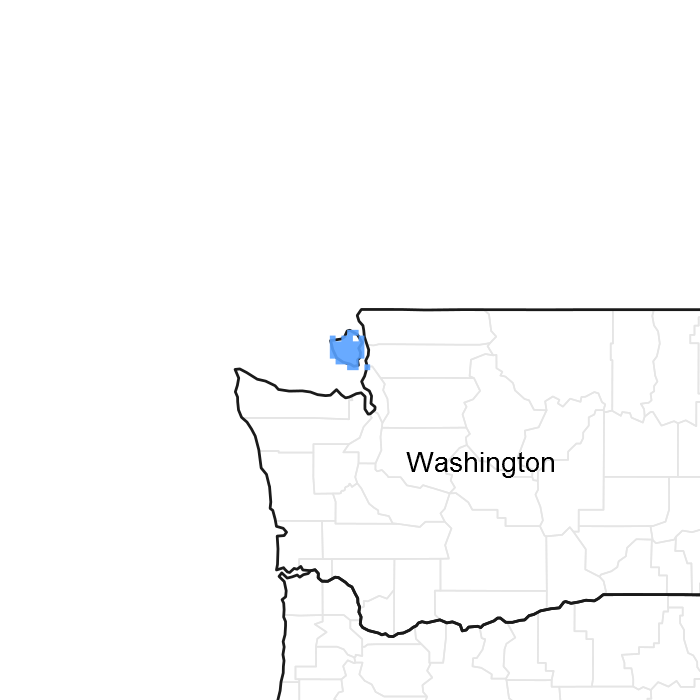
Figure 1. Mapped extent
Areas shown in blue indicate the maximum mapped extent of this ecological site. Other ecological sites likely occur within the highlighted areas. It is also possible for this ecological site to occur outside of highlighted areas if detailed soil survey has not been completed or recently updated.
MLRA notes
Major Land Resource Area (MLRA): 002X–Willamette and Puget Sound Valleys
Major Land Resource Area-[MLRA][LRU]: 002X N Willamette and Puget Sound Valleys, North Puget. The Land Resource Unit (LRU) is described in detail in the reference Washington NRCS Pasture TN-101 Forage Zones available on the eFOTG. For more information on MLRA’s, refer to the following web site: http://www.essc.psu.edu/soil_info/soil_lrr/. Additional information on Common Resource Areas is available on the eFOTG for NRCS Washington: http://efotg.nrcs.usda.gov/efotg_locator.aspx?map=WA and the following website: http://soils.usda.gov/survey/geography/cra.html. This ecological site occurs in the following Common Resource Areas: 2.10 - Fraser Lowland; 2.11 - Eastern Puget Riverine Lowlands; 2.11 - Eastern Puget Mountain River Valleys; 2.12 - San Juan Islands; 2.13 - Olympic Rainshadow; 2.5 - Eastern Puget Uplands; and 2.6 - Central Puget Lowland
Table 1. Dominant plant species
| Tree |
Not specified |
|---|---|
| Shrub |
Not specified |
| Herbaceous |
Not specified |
Physiographic features
Balds consist of distinct, small patches of non-forested areas within the forest matrix. Balds usually occur as a complex with rock outcrops. Site factors that contribute to creating droughty sites include: limited soil depth to a restricting layer (shallow and very shallow soils), upper slopes and ridgetops positions, southern to western aspects, slope (steeper is drier), coarse soil texture, and/or a high percentage of coarse fragments in the soil profile. Portions of these sites can be seasonally moist to wet in winter and spring where water is perched above an impervious layer.
Table 2. Representative physiographic features
| Landforms |
(1)
Hill
(2) Mountain (3) Mountain slope |
|---|---|
| Flooding frequency | None |
| Ponding frequency | None |
| Elevation | 1,500 ft |
| Slope | 75% |
| Aspect | E, S, W |
Climatic features
The average annual precipitation ranges from 18 to 60 inches, although most areas range from 30 to 50 inches. Annual precipitation less than 30 inches occurs in the rainshadow of the Olympic Mountains along the western border of this area. Higher average annual precipitation, 50 to 60 inches, occurs next to the foothills of the surrounding mountains. Most of the precipitation occurs as low intensity, Pacific frontal storms (75%-fall and winter, 15%-spring.) Rain turns to snow at the higher elevations, although accumulations are usually small and of short duration. The number of days with snow on the ground varies from 0 to 9, with an averge of 3 days. Summers are cool and dry. Recorded temperature extremes range from -1 degrees to 107 degrees fahrenheit. See the climate tables in this document for information on temperatures and frost-free periods.
Table 3. Representative climatic features
| Frost-free period (average) | 202 days |
|---|---|
| Freeze-free period (average) | 258 days |
| Precipitation total (average) | 39 in |
Figure 2. Monthly precipitation range
Figure 3. Monthly average minimum and maximum temperature
Figure 4. Annual precipitation pattern
Figure 5. Annual average temperature pattern
Influencing water features
Soil features
The soils that support this native plant community typically occur on south or west-facing slopes, in complex with stringers of deeper soil, and patches of rock outcrop. The soils are generally shallow, with very dark A horizons in the soil profile. Typical soil components are Haro, Hiddenridge, and Rainier-Rock Outcrop complex.
The soils have a mesic soil temperature regime, a xeric soil moisture regime, and mixed mineralogy. Soils vary widely in their characteristics and range from shallow to moderately deep. Moderately well drained soils formed in till on till plains and moraines. Gently sloping to steep, well drained soils formed in colluviums and residuum on foothills. Moderately well drained soils formed in a mixture of till, loess, and volcanic ash on hills.
These soils typically have a restrictive layer of dense material or bedrock present, ranging from 15 to 40 inches below the soil surface. The impervious layer in the soil can cause a high subsurface water table to develop rapidly during the rainy season. The water table is generally a concern between November and March, although the depth to the water table during this period will fluctuate depending on rainfall and depth to the restrictive layer in the soil profile.
The soil series that have been correlated to this site are Haro and Hiddenridge.
Table 4. Representative soil features
| Parent material |
(1)
Drift
–
metasedimentary rock
|
|---|---|
| Surface texture |
(1) Loam (2) Gravelly coarse sandy loam |
| Family particle size |
(1) Loamy |
| Drainage class | Well drained |
| Permeability class | Moderately rapid to moderate |
| Soil depth | 10 – 60 in |
| Surface fragment cover <=3" | 10% |
| Surface fragment cover >3" | Not specified |
| Available water capacity (0-40in) |
0.9 – 3.6 in |
| Soil reaction (1:1 water) (0-40in) |
5.1 – 5.5 |
| Subsurface fragment volume <=3" (Depth not specified) |
24 – 57% |
| Subsurface fragment volume >3" (Depth not specified) |
5% |
Ecological dynamics
Historically, balds were more extensive due to indigenous human burning practices. Most sites are marginal for Douglas-fir establishment and growth to maturity due to extreme summer drought conditions, except at edges or moist, convex microsites and seep areas. In the absence of fire, most sites eventually convert to coniferous woodlands or forest, especially small ones or ones with more abundant moist microsites. This is grassland, dominated or co-dominated by the bunchgrass Idaho fescue ssp. roemeri. The evergreen shrub tall oregongrape and the dwarf-shrub kinnikinnick occur on the site. Frequent native forb species include camas, western buttercup, yarrow, woolly sunflower, field chickweed, meadow death-camas, chocolate lily, small-flowered deervetch, and spring-gold. Wallace’s selaginella (habit similar to a moss) is usually present on small rock outcrops within the association. The other native grasses and grasslikes include long-stolon sedge, woodrush, California oatgrass, praire junegrass, California brome, and blue wildrye. Mosses and lichens typically cover the space between grasses and forbs.
Some disturbance is natural in these plant communities, including: fire, both natural and human caused; soil perturbation resulting from causes such as small mammals, earthworms, root activity; freeze-thaw cycles; and harvest of bulbs and rhizomes; and wildlife grazing. . Disturbances can be reduced or eliminated through actions such as fire control, or cessation of activities such as mowing, soil disturbance, livestock grazing or vehicle access. If no disturbance occurs, this plan community will be invaded by shrub and tree species. Typical shrub and tree species include snowberry, rose, Douglas fire and lodgepole pine. Disturbance will affect the different plant classes in varying ways. Timing of disturbance will also affect shifts in plant communities. The Disturbance Effects on Plant Classes table summarizes some of these effects.
If nonnative species are present in the area, these will invade the site whether or not disturbance is maintained, increased, or eliminated. Their dominance in the community will be affected by the type and intensity of disturbance, as will the dominance of the different plant classes. If disturbance such as tillage, herbicide use, or intensive vehicle traffic eliminates the plant community, then a nonnative plant community will be established, either through planting, or invasion of introduced seral species.
Restoration – It’s possible to reestablish plant communities on suitable soils. Native species can be replanted and the site managed to maintain or increase the percentage cover of these species. The Disturbance Effects table lists appropriate types of disturbance to help establish the desired plant community. If nonnatives are present on the site, there will always be a presence in the community as these species are adapted to a wide range of soils, climates and disturbance regimes. However, the management of disturbance types can affect the balance of species on a site.
State and transition model
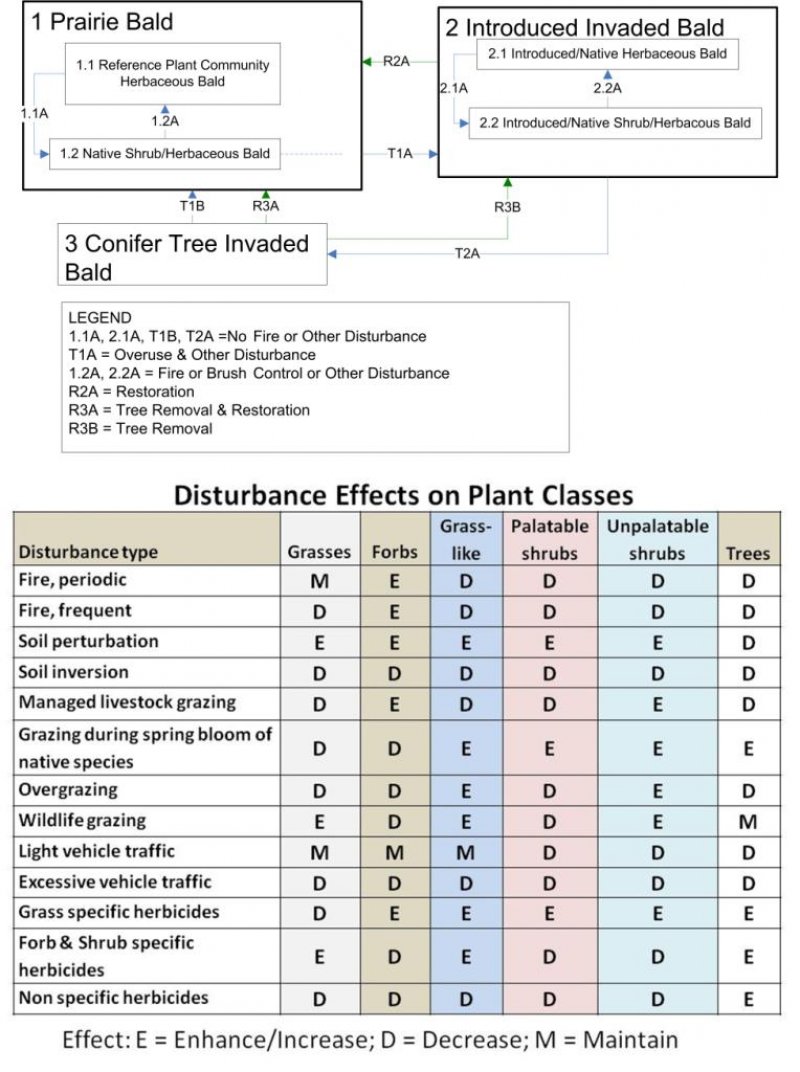
More interactive model formats are also available.
View Interactive Models
More interactive model formats are also available.
View Interactive Models
Click on state and transition labels to scroll to the respective text
Ecosystem states
State 1 submodel, plant communities
State 2 submodel, plant communities
State 3 submodel, plant communities
State 1
Reference
These areas were historically kept free of extensive brush and tree cover by burning. Typical native plant species found on the site include Roemer’s fescue (Festuca roemeri), camas (Camassia quamash), prairie junegrass (Koeleria macrantha), California oatgrass (Danthonia californica), field chickweed (Cerastium arvense ssp strictum) and Oregon white oak (Quercus garryana). In some areas, these sites are influenced by various abiotic factors such as prevailing winds (especially across marine waters), proximity to unprotected marine waters, or elevation, which will cause these locales to be cooler than the climate generally associated with these soil series. This is referred to as the Cold Phase in the ecological site description. The effect on the plant community is generally the absence of Oregon White Oak from the community.
Community 1.1
Herbaceous Bald

Figure 6. Rock Outcrop Bald
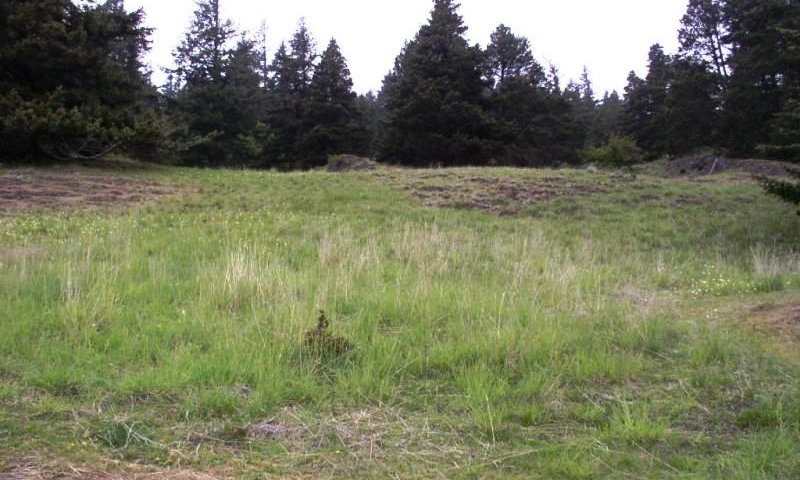
Figure 7. Bald #1
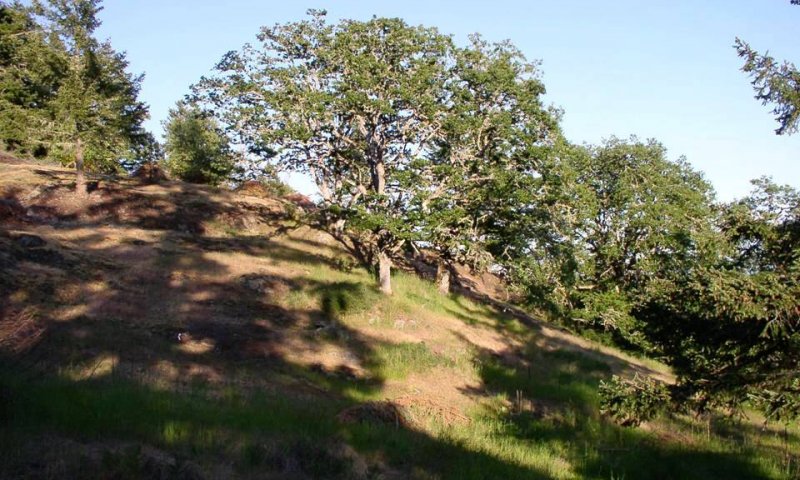
Figure 8. Bald with Garry Oak
Figure 9. Annual production by plant type (representative values) or group (midpoint values)
Table 5. Annual production by plant type
| Plant type | Low (lb/acre) |
Representative value (lb/acre) |
High (lb/acre) |
|---|---|---|---|
| Forb | 425 | 550 | 700 |
| Grass/Grasslike | 340 | 440 | 560 |
| Shrub/Vine | 51 | 66 | 84 |
| Tree | 34 | 44 | 56 |
| Total | 850 | 1100 | 1400 |
Table 6. Ground cover
| Tree foliar cover | 0-1% |
|---|---|
| Shrub/vine/liana foliar cover | 5-10% |
| Grass/grasslike foliar cover | 50-60% |
| Forb foliar cover | 35-45% |
| Non-vascular plants | 0% |
| Biological crusts | 0% |
| Litter | 0% |
| Surface fragments >0.25" and <=3" | 0% |
| Surface fragments >3" | 0% |
| Bedrock | 0% |
| Water | 0% |
| Bare ground | 0% |
Figure 10. Plant community growth curve (percent production by month). WA0222, Droughty. Droughty or limited depth soils (available water-holding capacity generally < 4.5"/40" soil depth).
| Jan | Feb | Mar | Apr | May | Jun | Jul | Aug | Sep | Oct | Nov | Dec |
|---|---|---|---|---|---|---|---|---|---|---|---|
| J | F | M | A | M | J | J | A | S | O | N | D |
| 2 | 8 | 15 | 23 | 19 | 17 | 5 | 1 | 1 | 5 | 3 | 1 |
Community 1.2
Native Shrub and Herbaceous Bald
Pathway 1.1A
Community 1.1 to 1.2
No fire or other disturbance – This pathway occurs when disturbances, either natural or man-made, are reduced or eliminated through actions such as fire control, or cessation of activities such as mowing, soil perturbation grazing or vehicle access.
Pathway 2.1A
Community 1.2 to 1.1
Fire, Brush Control or Other Disturbance – This pathway occurs when controlled disturbance is restored to the system, through methods such as prescribed fire, brush control, invasive plant control, mowing, thatching, grazing, and/or soil aeration.
State 2
Introduced Invaded
Community 2.1
Introduced and Native Herbaceous Bald
Community 2.2
Introduced, Native Shrub, and Herbaceous Bald
Pathway 2.1A
Community 2.1 to 2.2
No fire or other disturbance – This pathway occurs when disturbances, either natural or man-made, are reduced or eliminated through actions such as fire control, or cessation of activities such as mowing, soil perturbation grazing or vehicle access.
Pathway 2.2A
Community 2.2 to 2.1
Fire, Brush Control or Other Disturbance – This pathway occurs when controlled disturbance is restored to the system, through methods such as prescribed fire, brush control, invasive plant control, mowing, thatching, grazing, and/or soil aeration.
State 3
Conifer Invaded
Community 3.1
F002XN901WA
Transition T1A
State 1 to 2
This transition occurs when uncontrolled disturbance is persistent in the system, such as: overgrazing; mowing in the wrong season, wrong height, or at the wrong frequency; vehicle use that causes vegetation damage; or too-frequent fire. In addition, non-native plant seeds or propagules or present on or near the site.
Transition T1B
State 1 to 3
No fire or other disturbance – This transition occurs when disturbances, either natural or man-made, are reduced or eliminated through actions such as fire control, or cessation of activities such as mowing, soil perturbation grazing or vehicle access.
Restoration pathway R2A
State 2 to 1
Restoration – removal of non-native species and restoration or the original plant community through methods such as prescribed fire, brush control, invasive plant control, mowing, thatching, grazing, and/or soil aeration and reseeding.
Transition T2A
State 2 to 3
No fire or other disturbance – This transition occurs when disturbances, either natural or man-made, are reduced or eliminated through actions such as fire control, or cessation of activities such as mowing, soil perturbation grazing or vehicle access.
Restoration pathway R3A
State 3 to 1
Tree Removal and Restoration – Harvest and removal of trees from the site; or girdling of trees. Additionally, removal of non-native species grass, forb and shrub species and restoration or the original plant community through methods such as prescribed fire, brush control, invasive plant control, mowing, thatching, grazing, and/or soil aeration and reseeding.
Restoration pathway R3B
State 3 to 2
Tree Removal – Harvest and removal of trees from the site; or girdling of trees.
Additional community tables
Table 7. Community 1.1 plant community composition
| Group | Common name | Symbol | Scientific name | Annual production (lb/acre) | Foliar cover (%) | |
|---|---|---|---|---|---|---|
|
Grass/Grasslike
|
||||||
| 1 | 0 | |||||
| Lemmon's needlegrass | ACLE8 | Achnatherum lemmonii | 0 | – | ||
| California oatgrass | DACA3 | Danthonia californica | 0 | – | ||
| blue wildrye | ELGL | Elymus glaucus | 0 | – | ||
| slender wheatgrass | ELTR7 | Elymus trachycaulus | 0 | – | ||
| Roemer's fescue | FEIDR2 | Festuca idahoensis ssp. roemeri | 0 | – | ||
| red fescue | FERU2 | Festuca rubra | 0 | – | ||
| prairie Junegrass | KOMA | Koeleria macrantha | 0 | – | ||
| Sandberg bluegrass | POSE | Poa secunda | 0 | – | ||
| 2 | Perennial Grasslike | 0 | ||||
| long-stolon sedge | CAIN9 | Carex inops | 0 | – | ||
| Pacific woodrush | LUCO6 | Luzula comosa | 0 | – | ||
| 3 | Annual Grasses | 0 | ||||
| Howell's bluegrass | POHO6 | Poa howellii | 0 | – | ||
|
Forb
|
||||||
| 6 | Bulbs | 0 | ||||
| tapertip onion | ALAC4 | Allium acuminatum | 0 | – | ||
| crown brodiaea | BRCO3 | Brodiaea coronaria | 0 | – | ||
| large camas | CALE5 | Camassia leichtlinii | 0 | – | ||
| small camas | CAQU2 | Camassia quamash | 0 | – | ||
| checker lily | FRAFA2 | Fritillaria affinis var. affinis | 0 | – | ||
| meadow deathcamas | ZIVE | Zigadenus venenosus | 0 | – | ||
| 7 | Perennial Forbs/Fibrous-rooted | 0 | ||||
| darkthroat shootingstar | DOPU | Dodecatheon pulchellum | 0 | – | ||
| hookedspur violet | VIAD | Viola adunca | 0 | – | ||
| 8 | biscuitroots | 0 | ||||
| barestem biscuitroot | LONU2 | Lomatium nudicaule | 0 | – | ||
| common lomatium | LOUT | Lomatium utriculatum | 0 | – | ||
| 9 | Balsamroot | 0 | ||||
| deltoid balsamroot | BADE2 | Balsamorhiza deltoidea | 0 | – | ||
| 10 | Perennial Forbs | 0 | ||||
| common yarrow | ACMI2 | Achillea millefolium | 0 | – | ||
| field chickweed | CEAR4 | Cerastium arvense | 0 | – | ||
| Menzies' larkspur | DEME | Delphinium menziesii | 0 | – | ||
| common woolly sunflower | ERLA6 | Eriophyllum lanatum | 0 | – | ||
| Virginia strawberry | FRVI | Fragaria virginiana | 0 | – | ||
| western buttercup | RAOC | Ranunculus occidentalis | 0 | – | ||
| 11 | Ferns | 0 | ||||
| western brackenfern | PTAQ | Pteridium aquilinum | 0 | – | ||
| 12 | Perennial Legume | 0 | ||||
| American vetch | VIAM | Vicia americana | 0 | – | ||
| 13 | Annual | 0 | ||||
| giant blue eyed Mary | COGR2 | Collinsia grandiflora | 0 | – | ||
| 14 | Annual Legume | 0 | ||||
| desert deervetch | LOMI | Lotus micranthus | 0 | – | ||
| smallflower lupine | LUPO3 | Lupinus polycarpus | 0 | – | ||
|
Shrub/Vine
|
||||||
| 20 | Shrubs | 0 | ||||
| Nootka rose | RONU | Rosa nutkana | 0 | – | ||
| common snowberry | SYAL | Symphoricarpos albus | 0 | – | ||
|
Tree
|
||||||
| 25 | Tree | 0 | ||||
| Pacific madrone | ARME | Arbutus menziesii | 0 | – | ||
| lodgepole pine | PICO | Pinus contorta | 0 | – | ||
| Douglas-fir | PSME | Pseudotsuga menziesii | 0 | – | ||
| Oregon white oak | QUGA4 | Quercus garryana | 0 | – | ||
Interpretations
Supporting information
Contributors
Martha Chaney
Marty Chaney
Approval
Kirt Walstad, 12/09/2024
Rangeland health reference sheet
Interpreting Indicators of Rangeland Health is a qualitative assessment protocol used to determine ecosystem condition based on benchmark characteristics described in the Reference Sheet. A suite of 17 (or more) indicators are typically considered in an assessment. The ecological site(s) representative of an assessment location must be known prior to applying the protocol and must be verified based on soils and climate. Current plant community cannot be used to identify the ecological site.
| Author(s)/participant(s) | |
|---|---|
| Contact for lead author | |
| Date | 11/27/2024 |
| Approved by | Kirt Walstad |
| Approval date | |
| Composition (Indicators 10 and 12) based on | Annual Production |
Indicators
-
Number and extent of rills:
-
Presence of water flow patterns:
-
Number and height of erosional pedestals or terracettes:
-
Bare ground from Ecological Site Description or other studies (rock, litter, lichen, moss, plant canopy are not bare ground):
-
Number of gullies and erosion associated with gullies:
-
Extent of wind scoured, blowouts and/or depositional areas:
-
Amount of litter movement (describe size and distance expected to travel):
-
Soil surface (top few mm) resistance to erosion (stability values are averages - most sites will show a range of values):
-
Soil surface structure and SOM content (include type of structure and A-horizon color and thickness):
-
Effect of community phase composition (relative proportion of different functional groups) and spatial distribution on infiltration and runoff:
-
Presence and thickness of compaction layer (usually none; describe soil profile features which may be mistaken for compaction on this site):
-
Functional/Structural Groups (list in order of descending dominance by above-ground annual-production or live foliar cover using symbols: >>, >, = to indicate much greater than, greater than, and equal to):
Dominant:
Sub-dominant:
Other:
Additional:
-
Amount of plant mortality and decadence (include which functional groups are expected to show mortality or decadence):
-
Average percent litter cover (%) and depth ( in):
-
Expected annual annual-production (this is TOTAL above-ground annual-production, not just forage annual-production):
-
Potential invasive (including noxious) species (native and non-native). List species which BOTH characterize degraded states and have the potential to become a dominant or co-dominant species on the ecological site if their future establishment and growth is not actively controlled by management interventions. Species that become dominant for only one to several years (e.g., short-term response to drought or wildfire) are not invasive plants. Note that unlike other indicators, we are describing what is NOT expected in the reference state for the ecological site:
-
Perennial plant reproductive capability:
Print Options
Sections
Font
Other
The Ecosystem Dynamics Interpretive Tool is an information system framework developed by the USDA-ARS Jornada Experimental Range, USDA Natural Resources Conservation Service, and New Mexico State University.
Click on box and path labels to scroll to the respective text.